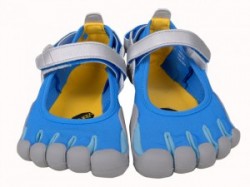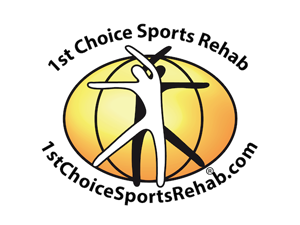Minimalist / Barefoot Running
by guest contributor, Dr. Dan Shuman
 In our practice we get asked a lot of questions regarding trends in sports and training. One topic that has drawn a lot of attention is the barefoot style running and its implication on the athlete. The Minimalist / Barefoot running style (landing on the midfoot or forefoot) has been around for decades but not until recently has it gained considerable popularity. Books, magazines and online blogs have fervently attempted to bring this style of running to the forefront of the running world, or the forefoot rather. Even the market for a more minimalist style shoe has skyrocketed with the New York Times reporting sales of so-called “minimalist” style shoes having risen 283% in 2011 over the same period in 2010. This has left the more traditional runner pondering the incorporation of that running style into their current regimen. This article will attempt to provide an evidence-based opinion on the advantages and disadvantages of this particular running style.
In our practice we get asked a lot of questions regarding trends in sports and training. One topic that has drawn a lot of attention is the barefoot style running and its implication on the athlete. The Minimalist / Barefoot running style (landing on the midfoot or forefoot) has been around for decades but not until recently has it gained considerable popularity. Books, magazines and online blogs have fervently attempted to bring this style of running to the forefront of the running world, or the forefoot rather. Even the market for a more minimalist style shoe has skyrocketed with the New York Times reporting sales of so-called “minimalist” style shoes having risen 283% in 2011 over the same period in 2010. This has left the more traditional runner pondering the incorporation of that running style into their current regimen. This article will attempt to provide an evidence-based opinion on the advantages and disadvantages of this particular running style.
The main question that we get is usually along the lines of, “what’s wrong with heel striking anyway?” In short, the answer is nothing necessarily. Someone might follow with, “well then why is barefoot running so great for me?” Both are good questions and again, the answer is very vague. Since the modern running shoe’s creation in the 1970’s, many runners enjoy this form and are injury free. While it is a relatively new way to run perpetually, there is no study to date that clearly demonstrates a causative relationship between increased injury rate and heel striking. Conversely, there is no study demonstrating a reduction of injuries in the barefoot running population. Instead of showing a reduction in the number of injuries, there have been studies that demonstrate a reduction in ‘injury factors’, which may be first step determining the importance of and how to incorporate barefoot or minimalist running into a training regimen.
The first injury prevention factor that’s been scientifically demonstrated is an improved sense of proprioception in barefoot runners over shod runners. Proprioception is the ability of body parts to tell the brain where it is in space. This is done through specialized receptors primarily in the eyes and ears but in the skin and joints as well. The modern running shoe is designed to have a large, cushioned heel and stiffening elements like an arch support and medial posting. All of this extra material is designed to protect the foot from debris and make the run feel more comfortable. However, it also prevents those proprioceptive receptors in the foot from feeling the ground. Studies have also shown that barefoot runners have a greater corrective muscular response when there is a foot position error, which can translate to a reduced risk of ankle sprains.
The second injury prevention factor that has been demonstrated is the reduction of impact in barefoot runners compared to shod runners. There is a large spike of intense force called the impact transient that is present when heel striking (which is actually more forceful when heel striking barefoot but that is not a natural form of running). This force is not present in forefoot and midfoot runners, barefoot or shod. The force that builds as the foot hits the ground with forefoot and midfoot running is much more gradual and sustained as the muscular system is able to dampen the impact. This collision with the ground in heel striking sends the impact transient through the heel and into the rest of the body like a shockwave which forces the knees, hips and spine to distribute the force. While the body is built to do this, prolonged periods of training with faulty biomechanics can take its toll and joint damage as well as repetitive soft tissue injuries can result. Some examples of impact-related injuries can include but are not limited to stress fractures, shin splints, chondromalacia patellae, Plantar fascitis and Achilles tendonitis. It would therefore be in the best interest of an avid runner to keep the impact forces that enter the body as low as possible.
The disadvantages of barefoot running that have been mentioned include an increased risk of general hazards and infections from bare skin exposure. Most healthcare professionals will warn barefoot runners about the risk of puncture wounds or severe athletes’ foot. These claims are unfounded and are often over exaggerated. When running barefoot, the perception of where the foot is being placed is heightened therefore it’s actually less likely to place the foot in an area of danger. Also infection rates of microorganisms in the continental United States through the foot are very low. Another controversial “disadvantage” is the gait changes that naturally occur when forefoot and midfoot striking. One will assume a quicker, shorter stride when barefoot running, which decreases ground reaction time. This increases the muscle activity, which some attribute to an increased load to the joints and strain injuries. This too is based off the assumptions of few and has not been proven scientifically.
After having explained the above to a curious patient, the usual follow up question goes something like, “how do I safely and effectively incorporate midfoot and forefoot running into my current training schedule?” For someone who has been a heel striker for the majority of their life, becoming anything but that takes time! Start first by walking around barefoot and gradually add a quarter of a mile to a half mile every other day. Then start to build the mileage from there but only if the muscles aren’t constantly sore. The Vibram Fivefingers most closely mimics the barefoot condition but it’s possible to find other shoes approaching a “zero drop” heel lift which will produce similar gait changes (some examples include Newtons, Saucony Kinvara, or New Balance Minimus or just to name a few). Ice massage, stretching and foam rolling can help alleviate some of the pain associated with the transition but if pain persists longer than normal or if new pain is experienced, you should contact a health professional. General recommendations are that it takes about a month to six weeks to make the total transition and that some amount of running almost every day is needed for maintenance. People who should probably stay in conventional shoes are diabetics or those with lower extremity neuropathies due to their slower than average healing times.
To discuss whether minimalist/barefoot running might benefit you, schedule an appointment with one of our Atlanta sports chiropractors. Call 4040-377-0011.
Research Used:
-Nigg BM. The role of impact forces and foot pronation: a new paradigm. Clin J SportMed. 2001 Jan;11(1):2-9.
-Jenkins DW, Cauthon DJ. Barefoot running claims and controversies: a review of the literature. J Am Podiatr Med Assoc. 2011 May-Jun;101(3):231-46.
-Lieberman D, Venkadesan M, Werbel W, et al. Foot strike patterns and collision forces in habitually barefoot versus shod runners. Nature 463: 531, 2010
-Newman AA. Appealing to runners, even the barefoot brigade. The New York Times 2011 Jul 27.
Decatur Office
2545 Lawrenceville Hwy
Suite 100
Decatur, GA 30033
404-377-0011
Johns Creek Office
9810-B Medlock Bridge Rd
Suite 104
Johns Creek, GA 30097
404-300-9931
